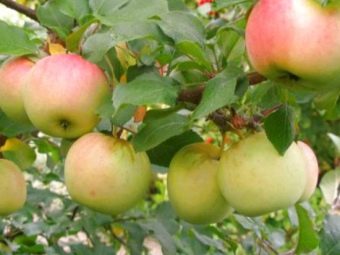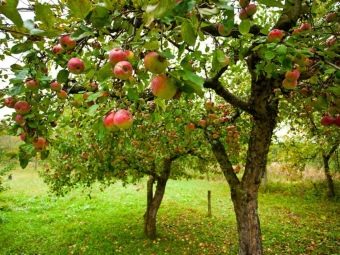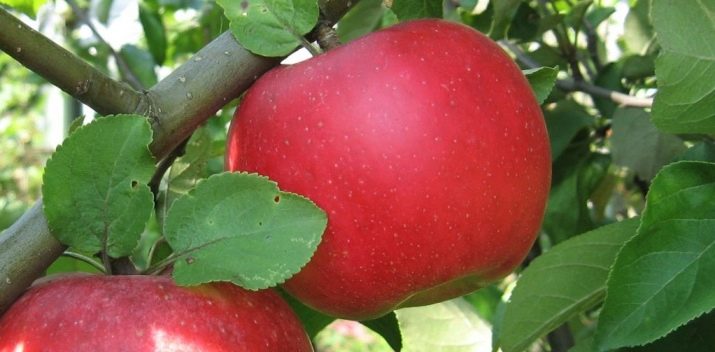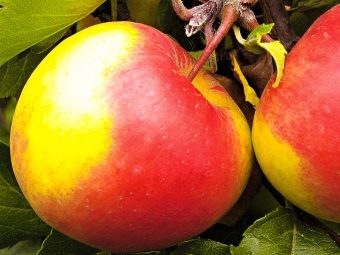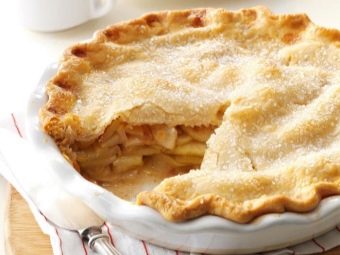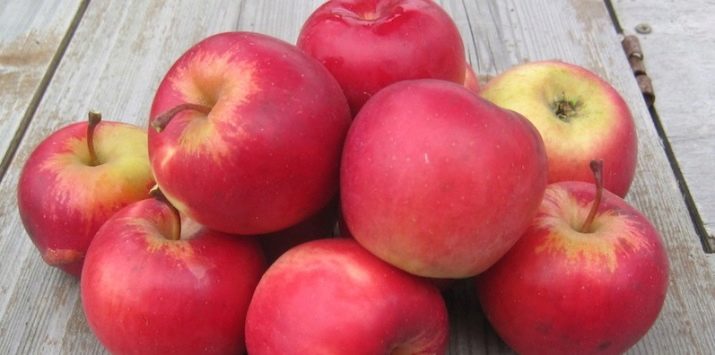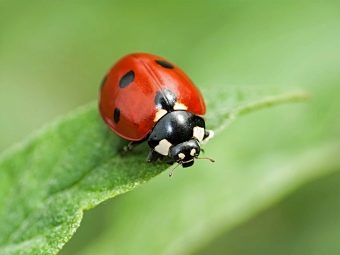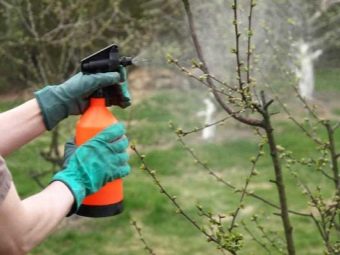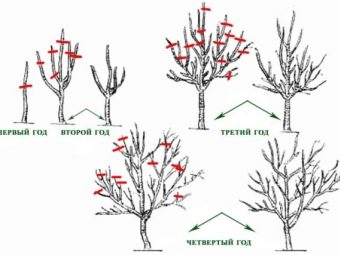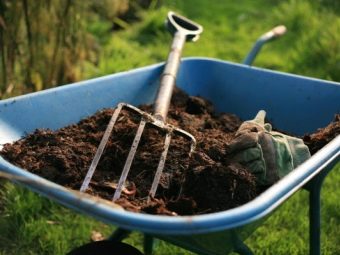Apple tree "Good News": description of the variety, planting and further care
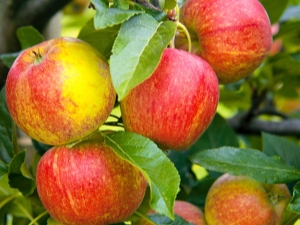
A good orchard is unthinkable without such a tree as an apple tree.But in order to grow this crop and regularly harvest a bountiful crop from it, you will have to work hard, including choosing a variety that is suitable for specific conditions. For this, it is worthwhile to consider the description of the hybrid “Good News” and find out how to plant and further care for the tree, as well as get acquainted with reviews of gardeners who successfully grow this variety of apple trees.
Special features
The apple tree "Good News" was developed at the Sverdlovsk Horticultural Plant Selection Station under the supervision of the well-known and experienced breeder L. A. Kotov. The plant is a hybrid of the well-known winter variety "Krasa Sverdlovsk", which was bred more than a quarter of a century ago by the same team, and specially designed for crossing with other apples of the hybrid, designated X-2034. The purpose of creating this variety of apple trees was to increase the sustainability of Krasa Sverdlovsk to such a dangerous fruit disease as scab, while retaining most of the positive qualities of this variety.
In the state register "Good News" was included in 2004, having passed the zoning in the Volga-Vyatka region. Since then, the variety has become widespread in the gardens of Bashkiria and the Northern Urals.
Characteristic
Trees of the "Good News" in height do not exceed four meters, which means that this variety belongs to the middle ones. On average, one should expect that the height of this tree during a longer period of its life will be about two and a half meters. At the same time, a rather high growth rate is noted - this culture reaches its maximum height within five years from the moment of landing or the stock. The branches of such a tree are often brown and medium pubescent, covered with relatively small oval leaves of dark green color. Since the shoots usually have an average length and are located close enough to each other, the crown of this breed usually has an average thickness and the shape of an oval extended along the vertical.
Despite its hybrid origins, "Good News" has retained the ability to self-pollination, so it can be grown on its own without additional pollinators. However, the neighborhood with varieties, which are characterized by larger sizes of fruits, can help to slightly increase the average size of apples of this variety. This breed was bred relatively recently, so the correct information about the expected lifespan of this tree has not yet been collected. However, taking into account the very long life expectancy of the “parent” species “Krasa Sverdlovsk”, which can reach one hundred years, gardeners have the right to expect that “Good News” will stand on their site for at least 50 years.
In addition to the basic variety, there is a semi-dwarf subspecies of the "Good News", whose height is up to one and a half meters. Otherwise, it is almost no different from a larger hybrid.
Yield
The apples on the trees of the "Good News" fully ripen by the last week of September or the first days of October, so the variety is usually referred to as late-winter. The first harvest of young trees is unlikely to be more than 25 kg, but as they mature, this figure rises to 45 kg per season. At the same time, according to available information, "Good News" bears fruit every year, fruitless years or decline in yield with aging in this class has not yet been observed.
Due to the relative youth of the hybrid, reliable information about the expected duration of the fruitful life of this apple tree does not yet exist. Fruiting begins as the tree ripens, usually the first harvest of these apples give four or five years. Such an early period of the onset of fruiting can be attributed to this variety to skoroplodny. The fruits of this variety are characterized by a round-barrel shape and a greenish-yellow color with a pronounced purple blush, which usually covers almost the entire surface of the fruit.The average weight of an apple of this breed is usually 100 grams, while there are also relatively small specimens weighing less than 80 g, and very large ones with a mass of about 200 g.
The pulp of the fruits of the "Good News" has a creamy shade familiar to apples and a dense, fine-grained texture. The apples in this hybrid are very juicy, have a pleasant sweet-sour taste, which received excellent ratings from most tasters (about 4.8 out of 5). But the flavor of this variety is not as pronounced as that of many others. By the way, the sweet and sour taste of these apples also indicates that they contain quite a lot of vitamin C, especially compared to the sweeter southern varieties. The fruits of this variety are equally good for use fresh, and for different types of processing.
Advantages and disadvantages
Acceptable and regular yield, precociousness, high content of vitamins and excellent taste are not the only advantages of the “Good News”. Like the "Beauty of Sverdlovsk", the main advantage of this variety is its excellent resistance to frost - the apple tree easily tolerates the harsh Ural winters with temperatures falling sometimes down to -40 ° C. This apple tree is also resistant to droughts. From its second “parent,” the hybrid took the highest immunity to all five existing varieties of the most dangerous fungal disease known as scab.
Finally, an important advantage of the “Good News” for cold regions is its long shelf life in fresh form - these apples can be safely stored for six months. It does not lose not only their suitability for use, but even taste. This makes the "Good News" an ideal candidate for creating winter stocks.
This variety is almost devoid of significant drawbacks. It may be noted perhaps that susceptibility to aphid invasions and poor resistance to rot, which makes it necessary to monitor the humidity of the area where this apple tree is grown.
How to plant?
You can grow the "Good News" with saplings, as well as planting it with mature trees. As a stock, almost any variety of apple trees will suit.
Seedlings of this variety are recommended to plant in spring or autumn. In the first case, April is best when the ground is already warm enough and has been defrosted, but the buds on the trees have not yet opened. In the second case, it is recommended to plant after the leaves fall, but not less than 2 weeks before the expected onset of frost.
As with the planting of other varieties, the seedling needs to be pre-cleaned in the area of the roots and soaked in disinfectant / restorative solutions. For planting, choose a well-lit area with medium humidity and light enough soil. The distance between seedlings or neighboring trees should not be less than 3 meters. When planting, make sure that the root neck after shrinkage of the soil was 5 centimeters above the ground.
How to care?
Biological methods have proven themselves well in the fight against aphids, since aphids have many natural enemies. To fight this pest will help:
- ladybugs;
- riders;
- gold eyes;
- hotshots.
When using biological methods, it should be remembered that the ants living on the plots often begin to protect the aphids from enemies - after all, the aphid secretes a sweet liquid that ants collect and eat. In the case of large-scale invasions of the pest will have to use complex insecticides. As a prevention of attacks by pests, you can apply a spraying of colloidal sulfur or copper sulfate.
Do not forget that even breeds of apple trees with a weak aroma still attract not only insects to the site, but also hares like rodents. Therefore, you need to carefully monitor the integrity of the fence. Yes, and a man’s friend like a dog would not be superfluous in the fight against such a threat to the harvest.
Due to poor resistance to rot, irrigation of the “Good News” is sufficient two or three times a week. Since the second year of the tree’s life, it is advisable to carry out regular annual fertilizing, which should include the introduction of ash and compost into the soil, as well as the use of complex fertilizers, especially those rich in potassium and calcium.
Annually in the spring, before the buds unfold, it is necessary to carry out sanitary and aesthetic molding of the crown. Fortunately, in this variety it is not as thick and extensive as many others, so you can limit the removal of diseased and dry branches. However, the flight of the gardener's imagination in terms of the desired shape of the crown, nothing restricts, so you can change it to a longline or cup. It is necessary to care not only for the tree, but also for the soil around it, so it is important to regularly loosen the soil and mulch it on sunny summer days.
All gardeners who grow the "Good News" on their plots, confirm the compliance of the real characteristics of the hybrid declared. No one has yet encountered cases of defeat by this scab by a scab or the death of a tree from frost. According to the authors of the reviews, the fruits of this variety are really stored for six months or more. Negative reviews on the variety is not noticed.
That surely it is necessary to make with an apple-tree in the spring, look in the following video.

